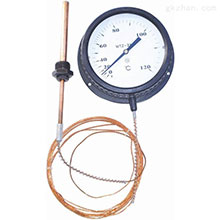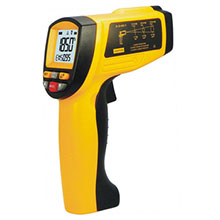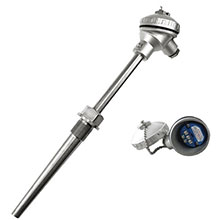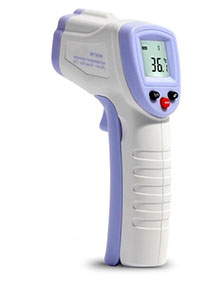Industrial Field Temperature Measurement Method
The temperature detection technology is relatively mature now, and the development changes are relatively small. The main change is that the temperature transmitter has developed rapidly and has entered into a new period of automation and intelligence. The protective performance of temperature detection instruments has been strengthened, such as anti-corrosion, explosion-proof, anti-corrosion, waterproof, etc. The selection of temperature detection methods is particularly important for its use and control in industrial sites. Appropriate measurement methods can get twofold result with half the effort. The following passage is brief description of temperature transmitter type.
Pressure Type Thermometer
It is one of the earliest temperature measurement methods in the production process, which is widely used in local indication and temperature control. The pressure temperature measurement system with electric contacts is often used as a circuit contact switch for local temperature control.
The pressure type thermometer is suitable for occasions that do not corrode copper or copper alloys. Its advantages are: simple structure; high mechanical strength; resistant to vibration; no external power supply; low price. The disadvantages are that the temperature measurement range is limited (-80~400 °C); the heat loss is large and the response time is long; the damage of the instrument sealing system (temperature bulb, capillary, spring tube) is difficult to repair and must be replaced; the measurement accuracy is affected by the ambient temperature and package installation position; capillary transmission distance is limited. Pressure type thermometer were widely used before DCS appeared, but most of them have been replaced by thermal resistance and bimetal thermometers today.
RTD
Thermal resistance has high measurement accuracy, can be used as a standard instrument, and is widely used in the production process to measure the temperature of various media. Its advantages are: high measurement accuracy; good reproducibility; compared with thermocouple measurement, it does not require cold junction temperature compensation and compensation wires. The disadvantages are that an external power supply is required; the thermal inertia is large; and it cannot be used in occasions with mechanical vibration. The armored thermal resistance seals the temperature detection element, the insulating material and the wire in a metal tube. Its outer diameter can be made small, and it has good mechanical properties and anti-vibration capability. At the same time, it has the advantages of fast response and small time constant.
The armored thermal resistance can be made into a cable-like form, which is flexible and can be bent arbitrarily, and is suitable for temperature measurement in various complex structural occasions. Its signal can be directly connected to the card of the control system, or it can be converted into an analog signal (4-20mA) or a bus signal through a temperature transmitter to enter the control system.
Bimetallic Thermometer
Bimetallic thermometers are versatile in-situ thermometers. Its advantages are: simple structure; low price; easy maintenance; resistant to vibration and shock; continuous indication. While the disadvantages are that the measurement accuracy is low; most of them are used for on-site display and do not require control.
Thermocouple
Thermocouples account for a large proportion of industrial temperature measurement. Thermocouples are mostly used for remote temperature measurement in the production process. Its advantages are: small size; easy installation; remote signal transmission can be used for display and control; fast response speed; wide temperature measurement range; high temperature accuracy; good reproducibility; easy calibration, low price. The disadvantages are that the relationship between thermoelectric potential and temperature is nonlinear; the accuracy is lower than that of resistance; under the same conditions, the thermocouple contact is easy to age. In production field, thermal resistance is generally used when the temperature is less than 300 °C, and thermocouples are mostly used when the temperature is higher than 300 °C.
Optical Pyrometer
Optical pyrometer is simple in structure, lightweight and easy to use. It is often used in metal smelting, glass melting, heat treatment and other processes, which are non-contact temperature measurement. However, the measurement relies on the human eye, which can easily lead to subjective errors.
Radiation Pyrometer
Radiation pyrometers are mainly used in ultra-high temperature applications that cannot be measured by thermocouples. Its advantages are: high temperature measurement; fast response; non-contact temperature measurement; moderate price. The disadvantage are: nonlinear scale; the emissivity of the measured object and the absorption rate of the intermediate medium of the radiation channel will affect the measurement; complex structure.
Infrared Thermometer
Infrared thermometer (portable) is characterized by non-contact temperature measurement; wide temperature measurement range (600~1800℃/900~2500℃); high precision; stable performance; fast response time; long working distance. Infrared thermometer is easy to carry, which makes it one of the inspection tools that must be equipped on site.
Nowadays, Industrial automation is highly integrated, temperature measurement is no longer out of reach. If coupled with wireless transmission, it is no longer a problem to measure the temperature of high towers or deep seas. There is no perfect measurement method, only the most suitable measurement method.



